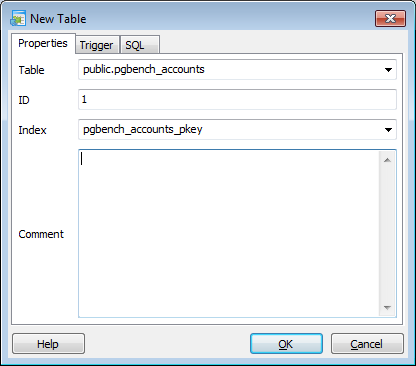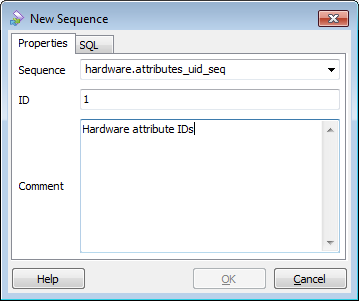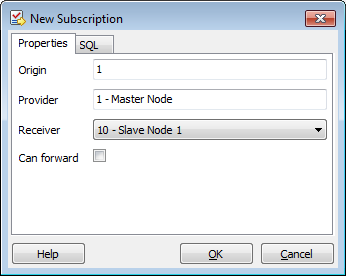Creating sets and subscriptions
Create replication set

Slony-I groups tables and sequences it has to replicate from a master to slaves into replication sets. The set is created on the source node of the data.
Define replicated table

If the source table has triggers defined on it, these have to be disabled on replication target nodes. But in replication environments, the master and slave roles might exchange, so it is necessary to enable and disable triggers in those situations. The ‘Trigger’ page allows selection of triggers that Slony-I should enable and disable if necessary.
Attention: If a table you’d like to have replicated doesn’t appear in the table combobox, this usually means that the table lacks a unique index. Slony-I requires that each row in tables that are to be replicated must be uniquely identifyable. Usually, this should be done with a primary key, but for replication purposes a unique key is satisfactory.
While Slony-I has a helper function to define intermediate unique keys, this is not supported with tables added to replication sets with pgAdmin III. We strongly recommend defining a primary key on the tables to be replicated.
Define replicated sequence

The sequence allows adding sequences to a replication set.
Subscribe a replication set

After a replication set has been defined, it can be subscribed. Subscriptions have to be created on the source node (note: on Slony-1 before v1.1, this had to be performed on the target node).
After a set has been subscribed, its table and sequence definition can’t be changed any more. To add more tables, you can create a set that includes the additional tables and sequences you’d like to have added to the first replication set, then subscribe exactly the same receiver nodes to it, and finally use Merge to merge both sets into one.